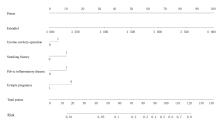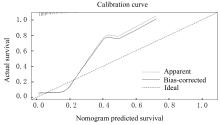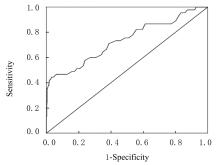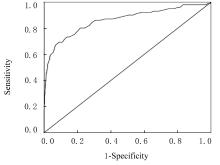| 1 |
LI Y, WANG Y P, LAN Y L, et al. Antinuclear antibodies in follicular fluid may reduce efficacy of in vitro fertilization and embryo transfer by invading endometrium and granular cells[J]. Am J Reprod Immunol, 2020, 84(4): e13289.
|
| 2 |
JIN H X, LV A X, WU Z T, et al. Comparative study on the pregnancy outcomes of in vitro fertilization-embryo transfer between patients with different ovarian responses (a STROBE-compliant article)[J]. Medicine (Baltimore), 2019, 98(27): e16191.
|
| 3 |
JIN X Y, LI C, XU W, et al. Factors associated with the incidence of ectopic pregnancy in women undergoing assisted reproductive treatment[J]. Chin Med J (Engl), 2020, 133(17): 2054-2060.
|
| 4 |
XI Q, YU Y, ZHANG X Y, et al. Two cases of intrauterine pregnancy with tubal stump pregnancy after in vitro fertilization and embryo transfer following ipsilateral salpingectomy: a case report[J]. Medicine (Baltimore), 2019, 98(49): e18183.
|
| 5 |
冯军艳, 郑兴邦, 于晓明, 等. 输卵管Ⅲ期损伤保留输卵管的手术方式对体外受精-胚胎移植妊娠结局的影响[J]. 中国妇产科临床杂志, 2018, 19(4): 299-302.
|
| 6 |
娄 华, 孙 玲, 杨险峰, 等. 体外受精-胚胎移植术后发生宫内外同时妊娠的高危因素及妊娠结局分析[J]. 中华生殖与避孕杂志, 2019, 39(2): 92-96.
|
| 7 |
李冰冰, 刘雁峰, 梁嘉玲, 等. 输卵管积水对体外受精-胚胎移植的影响和治疗[J]. 辽宁中医杂志, 2020, 47(2): 70-73.
|
| 8 |
李 萱, 马延敏. 体外受精-胚胎移植术后复合妊娠的临床特点及研究进展[J]. 现代妇产科进展, 2019, 28(11): 879-880.
|
| 9 |
郑嘉华, 王丽丽, 周晓静, 等. 卵巢妊娠相关高危因素分析: 附79例报道[J]. 中华生殖与避孕杂志, 2019, 39(11): 899-903.
|
| 10 |
张 玉, 唐 静, 董虹美, 等. 经阴道超声诊断胚胎移植术后宫内外复合妊娠: 60例分析[J]. 中国医学影像技术, 2018, 34(11): 1677-1680.
|
| 11 |
黄玲玲, 邬晓琳, 梅利斌, 等. 体外受精-胚胎移植后异位妊娠发生的相关因素分析[J]. 中国妇幼保健, 2020, 35(18): 3448-3452.
|
| 12 |
IZQUIERDO RODRIGUEZ A, DE LA FUENTE BITAINE L, SPIES K, et al. Endometrial scratching effect on clinical pregnancy rates in patients undergoing egg donor in vitro fertilization cycles: the ENDOSCRATCH randomized clinical trial (NCT03108157)[J]. Reprod Sci, 2020, 27(10): 1863-1872.
|
| 13 |
WANG X, LEE C L, LI R H W, et al. Alteration of the immune cell profiles in the pathophysiology of tubal ectopic pregnancy[J]. Am J Reprod Immunol, 2019, 81(4): e13093.
|
| 14 |
杨 青, 陶 帅, 牛志宏, 等. 胚胎移植操作对宫腔中胚胎运动、沉积的影响[J]. 中国组织工程研究, 2018, 22(24): 3880-3887.
|
| 15 |
李 磊, 陈仕萍, 刘寒艳, 等. 辅助生殖技术中影响异位妊娠发生的相关危险因素分析[J]. 实用妇产科杂志, 2018, 34(4): 298-301.
|
| 16 |
亢庆玲, 张 洋, 范 磊, 等. 妊娠中晚期完全性子宫破裂临床分析[J]. 现代妇产科进展, 2019, 28(6): 412-415.
|
| 17 |
姜子燕, 孙丽洲, 周 欣, 等. 前置胎盘产前出血与妊娠结局关系研究[J]. 中国实用妇科与产科杂志, 2019, 35(2): 214-220.
|
| 18 |
李 秀, 陆 琦, 王玉东. 辅助生殖技术后发生异位妊娠的高危因素分析[J]. 中国妇产科临床杂志, 2019, 20(5): 479-480.
|
| 19 |
王雪茵, 张小松, 周 敏, 等. 孕期被动吸烟对妊娠并发症及妊娠结局的影响[J]. 中华疾病控制杂志, 2020, 24(4): 419-423.
|
| 20 |
徐子力, 李 欢, 于倩倩, 等. 复合妊娠的临床研究进展[J]. 中国实验诊断学, 2019, 23(2): 352-354.
|
| 21 |
张欢欢, 郭艳巍, 张金环, 等. 异位妊娠危险因素的Meta分析[J]. 现代预防医学, 2018, 45(16): 2933-2940.
|
| 22 |
刘素芳. 人类辅助生殖技术对卵巢过度刺激综合征影响分析及其防治措施[J]. 基因组学与应用生物学, 2018, 37(12): 5552-5557.
|
| 23 |
林 娜, 马艳萍, 武 泽, 等. 体外受精-胚胎移植发生中重度卵巢过度刺激综合征患者的临床特点分析[J]. 山东医药, 2018, 58(10): 54-57.
|
| 24 |
KIM S W, KIM Y J, SHIN J H, et al. Correlation between ovarian reserve and incidence of ectopic pregnancy after in vitro fertilization and embryo transfer[J]. Yonsei Med J, 2019, 60(3): 285-290.
|
| 25 |
ZHANG Y L, WANG F Z, HUANG K, et al. Factors predicting clinical pregnancy rate of in vitro fertilization-embryo transfer (a STROBE-compliant article)[J]. Medicine (Baltimore), 2019, 98(50): e18246.
|
| 26 |
王洪玲, 张 琰. 早期异位妊娠患者β-HCG、E2和P水平变化及预测分析[J]. 现代预防医学, 2019, 46(1): 58-61.
|
| 27 |
LI X, ZENG C, SHANG J, et al. Association between serum estradiol level on the human chorionic gonadotrophin administration day and clinical outcome[J]. Chin Med J (Engl), 2019, 132(10): 1194-1201.
|
| 28 |
FRANTZ S, PARINAUD J, KRET M, et al. Decrease in pregnancy rate after endometrial scratch in women undergoing a first or second in vitro fertilization. A multicenter randomized controlled trial[J]. Hum Reprod, 2019, 34(1): 92-99.
|
| 29 |
WEI D M, YU Y H, SUN M, et al. The effect of supraphysiological estradiol on pregnancy outcomes differs between women with PCOS and ovulatory women[J]. J Clin Endocrinol Metab, 2018, 103(7): 2735-2742.
|
| 30 |
SHETTY A, VENKATESH T, TSUTSUMI R,et al. Regulated expression of Gemin5, Xrn1, Cpeb and Stau1 in the uterus and ovaries after superovulation and the effect of exogenous estradiol and leptin in rodents[J]. Mol Biol Rep, 2019, 46(2): 2533-2540.
|
| 31 |
蒋永杰, 寇邦国, 杜文龙, 等. 基于术前NLR、LMR、CEA和CA19-9对结肠癌根治术后预后列线图预测模型的构建及评价[J]. 解放军医学杂志, 2022,47(9):893-901.
|
| 32 |
邵全年, 周辉年, 肖竞英, 等. 基于术前NLR及PNI的胰腺癌根治术预后预测模型的构建及评价[J]. 解放军医学杂志, 2021,46(10):1009-1017.
|
| 33 |
龚 娇, 孙恒昌, 胡 波. 列线图在肿瘤风险预测和预后评估中的应用[J]. 中华检验医学杂志, 2020,43(6): 614-618.
|












